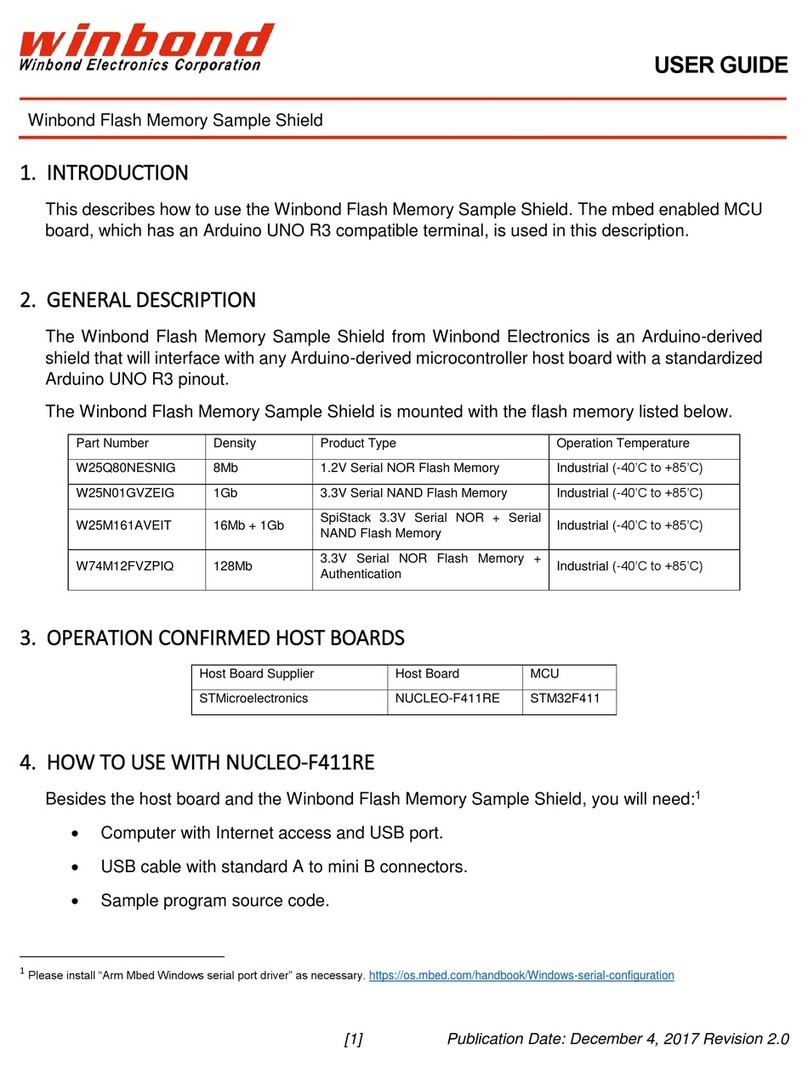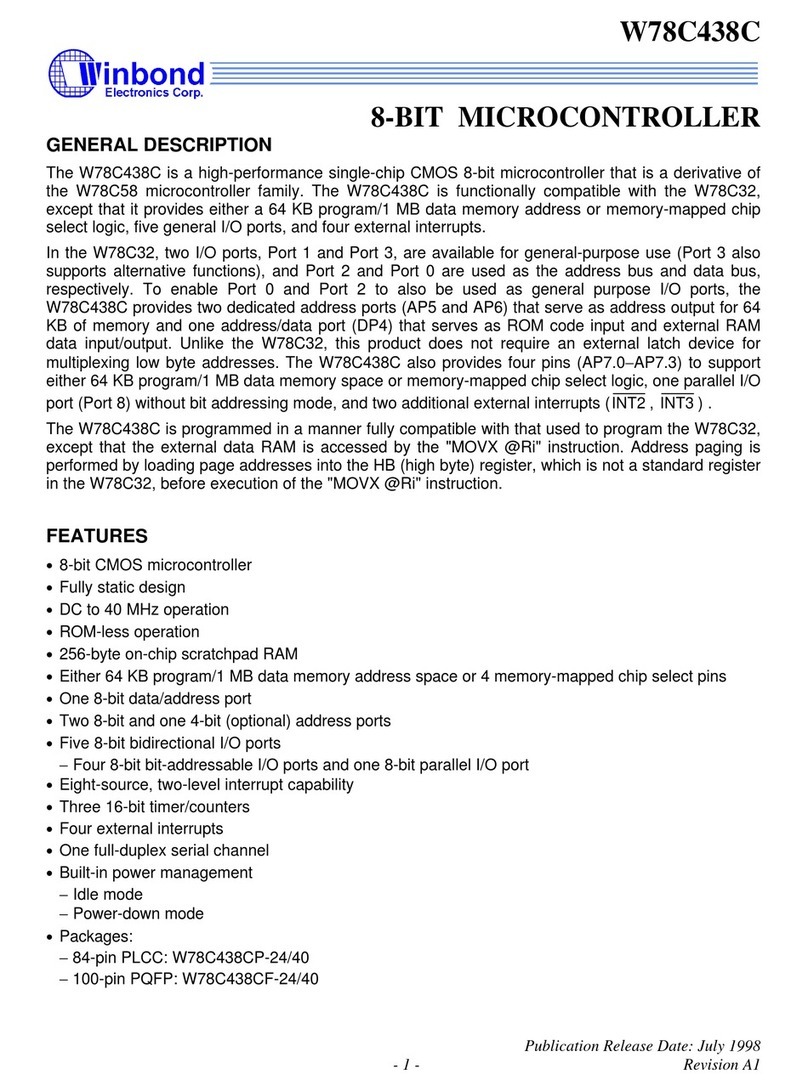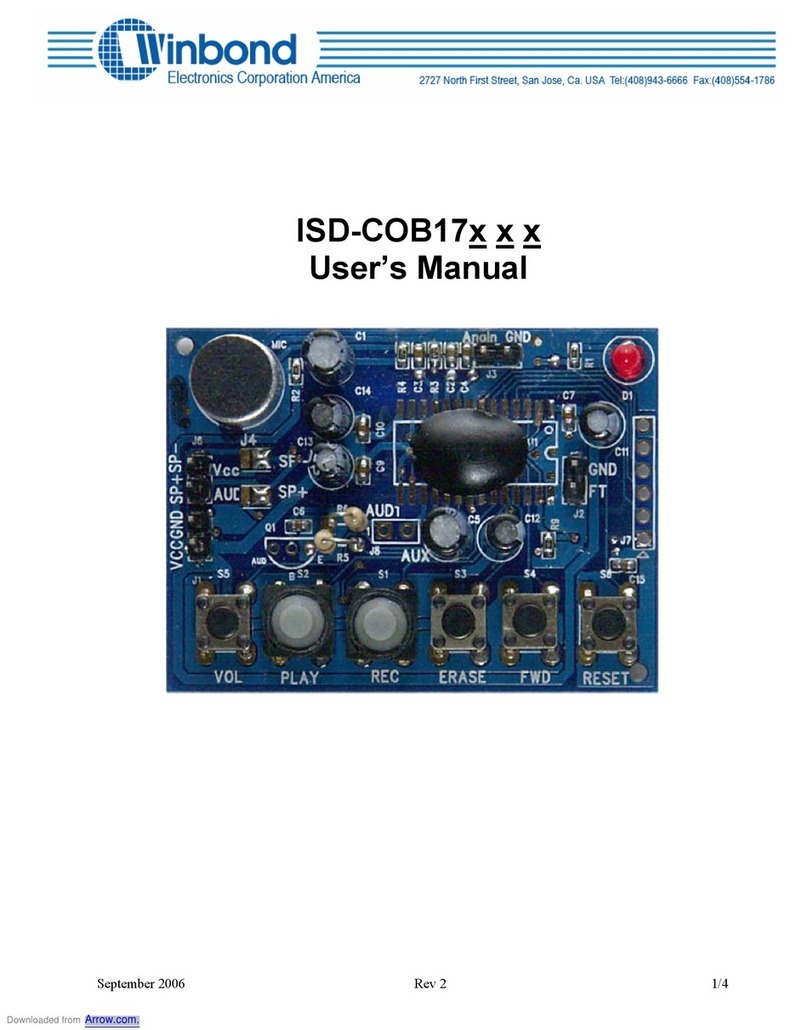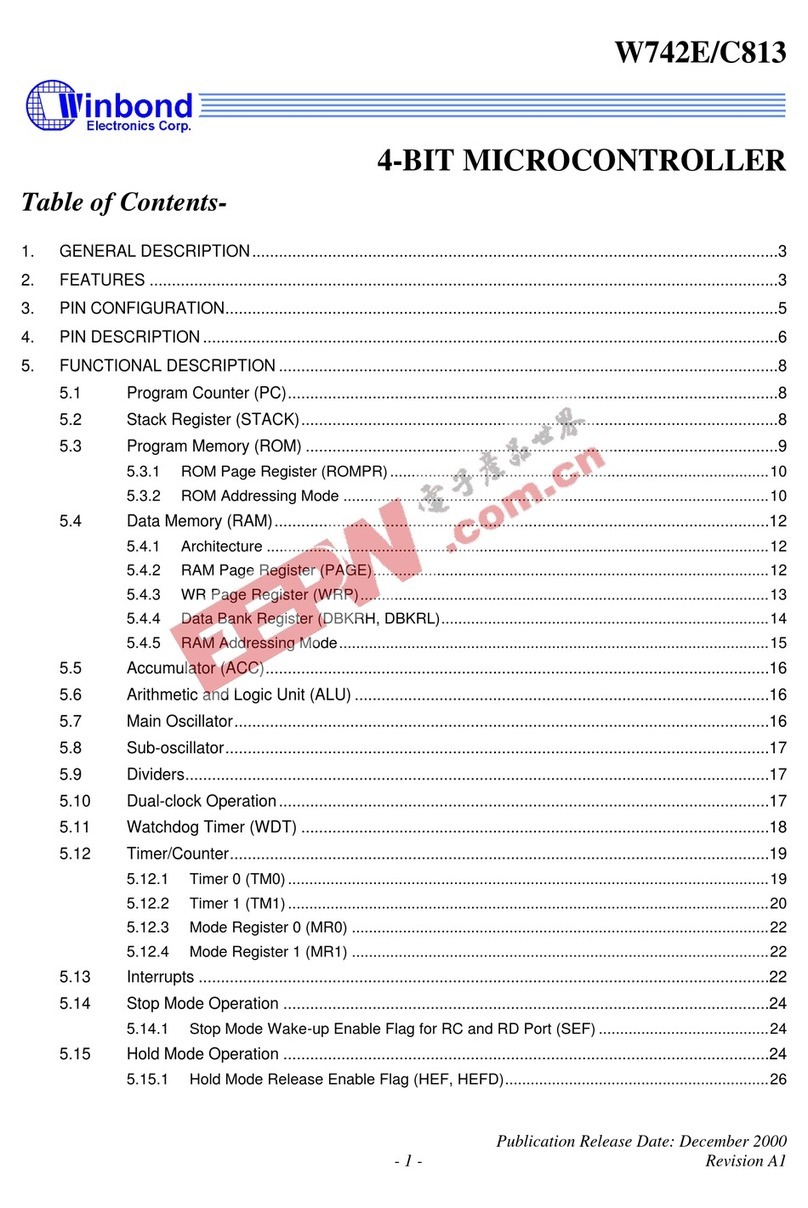
Preliminary W77E516
Publication Release Date: August 16, 2002
-7-Revision A1
6. FUNCTIONAL DESCRIPTION
The W77E516 is 8052 pin compatible and instruction set compatible. It includes the resources of the
standard 8052 such as four 8-bit I/O Ports, three 16-bit timer/counters, and full duplex serial port and
interrupt sources.
The W77E516 features a faster running and better performance 8-bit CPU with a redesigned core
processor without wasted clock and memory cycles. It improves the performance not just by running at
high frequency but also by reducing the machine cycle duration from the standard 8052 period of
twelve clocks to four clock cycles for the majority of instructions. This improves performance by an
average of 1.5 to 3 times. The W77E516 also provides dual Data Pointers (DPTRs) to speed up block
data memory transfers. It can also adjust the duration of the MOVX instruction (access to off-chip data
memory) between two machine cycles and nine machine cycles. This flexibility allows the W77E516 to
work efficiently with both fast and slow RAMs and peripheral devices. In addition, the W77E516
contains on-chip 1KB MOVX SRAM, the address of which is between 0000H and 03FFH. It only can
be accessed by MOVX instruction; this on-chip SRAM is optional under software control.
The W77E516 is an 8052 compatible device that gives the user the features of the original 8052
device, but with improved speed and power consumption characteristics. It has the same instruction
set as the 8051 family, with one addition: DEC DPTR (op-code A5H, the DPTR is decreased by 1).
While the original 8051 family was designed to operate at 12 clock periods per machine cycle, the
W77E516 operates at a much reduced clock rate of only 4 clock periods per machine cycle. This
naturally speeds up the execution of instructions. Consequently, the W77E516 can run at a higher
speed as compared to the original 8052, even if the same crystal is used. Since the W77E516 is a fully
static CMOS design, it can also be operated at a lower crystal clock, giving the same throughput in
terms of instruction execution, yet reducing the power consumption.
The 4 clocks per machine cycle feature in the W77E516 is responsible for a three-fold increase in
execution speed. The W77E516 has all the standard features of the 8052, and has a few extra
peripherals and features as well.
I/O Ports
The W77E516 has four 8-bit ports and one extra 4-bit port. Port 0 can be used as an Address/Data
bus when external program is running or external memory/device is accessed by MOVC or MOVX
instruction. In these cases, it has strong pull-ups and pull-downs, and does not need any external pull-
ups. Otherwise it can be used as a general I/O port with open-drain circuit. Port 2 is used chiefly as the
upper 8-bits of the Address bus when port 0 is used as an address/data bus. It also has strong pull-ups
and pull-downs when it serves as an address bus. Port 1 and 3 act as I/O ports with alternate
functions. Port 4 is only available on 44-pin PLCC/QFP package type. It serves as a general purpose
I/O port as Port 1 and Port 3. The P4.0 has an alternate function
that is the wait state control
signal. When wait state control signal is enabled, P4.0 is input only.
Serial I/O
The W77E516 has two enhanced serial ports that are functionally similar to the serial port of the
original 8052 family. However the serial ports on the W77E516 can operate in different modes in order
to obtain timing similarity as well. Note that the serial port 0 can use Timer 1 or 2 as baud rate
generator, but the serial port 1 can only use Timer 1 as baud rate generator. The serial ports
have the enhanced features of Automatic Address recognition and Frame Error detection.

































